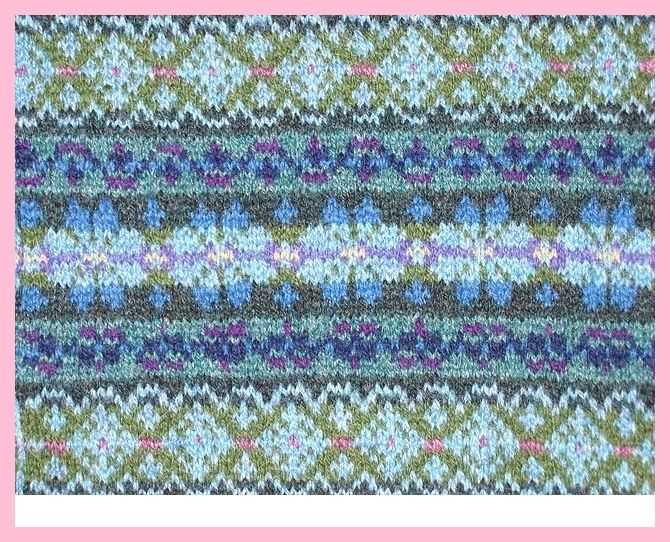
Fairisle knitting, also known as stranded knitting, is a traditional knitting technique that originated in the Fair Isle, a small island in the Shetland archipelago in Scotland. Fairisle patterns are characterized by their intricate colorwork, featuring multiple colors in each row or round of knitting. These patterns are created by carrying two or more contrasting colors of yarn across the back of the work, while knitting with alternating colors.
Fairisle knitting patterns are beloved by knitters around the world for their timeless beauty and intricate designs. These patterns often incorporate traditional motifs like hearts, stars, diamonds, or geometric shapes, which are repeated throughout the work. The colorwork creates a stunning effect, with the contrasting colors adding depth and dimension to the design.
While Fairisle knitting can seem daunting to beginners due to the need to carry multiple colors at once, with practice and patience, it can be mastered. It’s a technique that allows knitters to create stunning garments, accessories, and home decor items that are sure to impress. Whether it’s a cozy sweater, a stylish hat, or a pair of warm mittens, Fairisle knitting patterns offer endless possibilities for creativity and personalization.
Fairisle Knitting Patterns

Fairisle knitting patterns are a popular and traditional technique used to create beautifully intricate and colorful designs in knitted garments. Originating from the Fair Isle, a small island in the Shetland Islands of Scotland, this style of knitting incorporates multiple colors in each row to create patterns and motifs.
One of the distinctive features of Fairisle knitting is the use of two colors per row, with one color carried along the back of the work while the other is being knitted. This technique, known as stranding or stranded knitting, creates the contrasting patterns and colorwork that Fairisle is known for. The resulting fabric is warm, durable, and visually stunning.
Designs and Motifs
Fairisle knitting patterns often feature traditional motifs inspired by the natural world, such as flowers, animals, and geometric shapes. The most traditional and well-known Fairisle pattern is the “star” or “snowflake” motif, which consists of a central motif surrounded by smaller motifs. Other popular motifs include hearts, diamonds, and waves.
In addition to traditional motifs, modern Fairisle patterns often incorporate contemporary designs and colors, giving the technique a fresh and stylish look. Fairisle sweaters, hats, gloves, and scarves are popular choices for those who appreciate both the warmth and beauty of this knitting technique.
Getting Started
If you’re new to Fairisle knitting, it’s recommended to start with a small project such as a hat or a cowl to practice the stranding technique and get comfortable with working multiple colors. There are many Fairisle knitting patterns available online and in knitting books and magazines, ranging from beginner-friendly to more advanced.
When working with Fairisle patterns, it’s important to pay attention to tension and gauge to ensure that the colorwork is even and the finished garment fits correctly. Using a finer weight yarn and smaller needles may also help achieve a more intricate and detailed Fairisle design.
Conclusion

Fairisle knitting patterns offer a unique and captivating way to incorporate color and pattern into your knitting projects. With their rich history and wide variety of designs, Fairisle sweaters, hats, and accessories are sure to stand out and make a statement. Whether you choose a traditional or modern design, the artistry and skill required for Fairisle knitting make it a rewarding and fulfilling craft.
What are Fairisle Knitting Patterns?
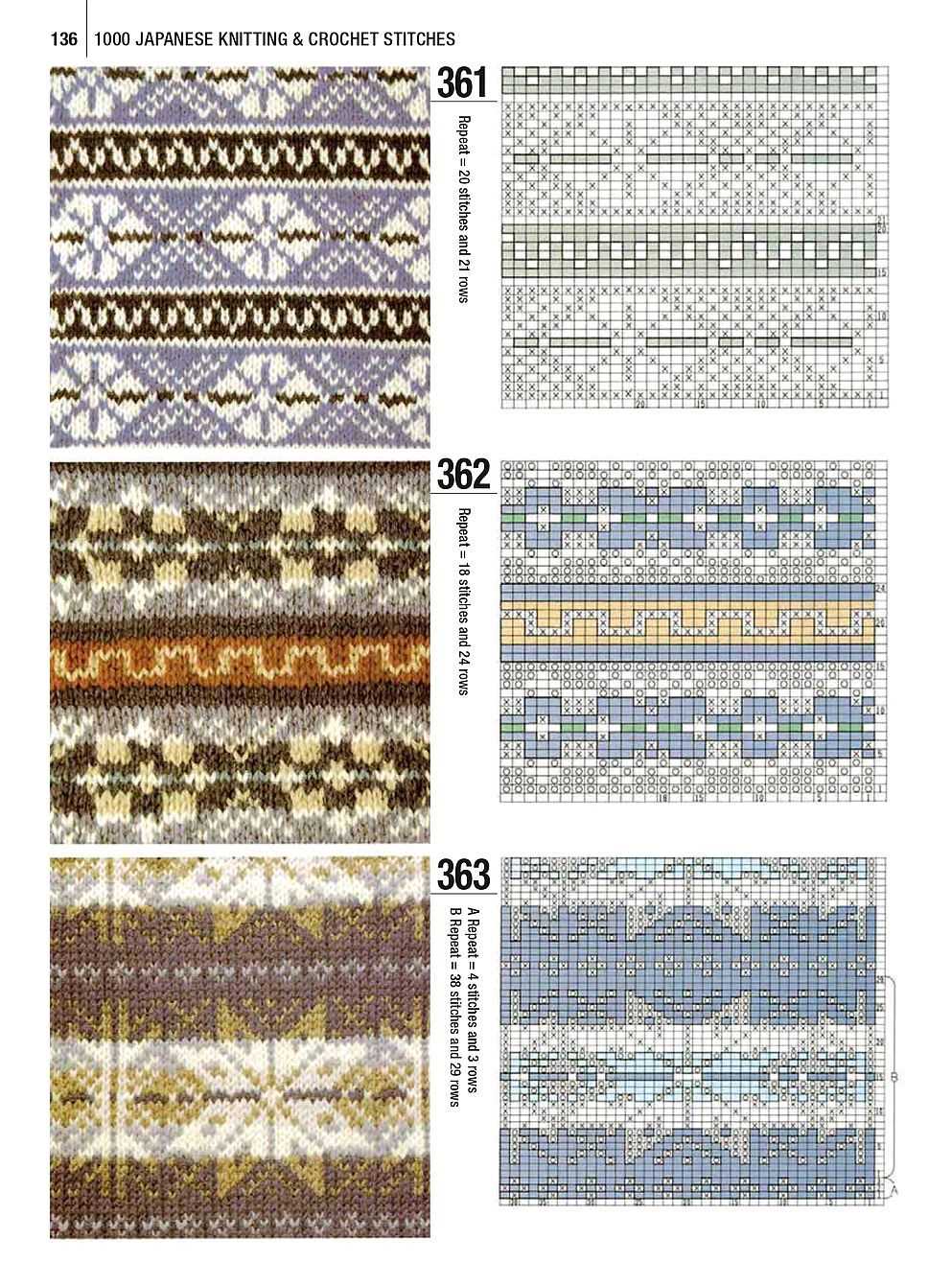
Fairisle knitting patterns are a traditional style of stranded colorwork that originated in the Fair Isle area of Scotland. These patterns are characterized by their use of multiple colors in each row or round, creating intricate designs and motifs.
One of the distinguishing features of Fairisle knitting patterns is the use of two or more colors in each row. Unlike other colorwork techniques, where one color is used for each row or section, Fairisle patterns incorporate multiple colors to create the unique designs. Typically, no more than two colors are used in any given row, and the colors are carried across the back of the work, creating floats on the wrong side.
Traditionally, Fairisle knitting patterns feature motifs inspired by nature, such as flowers, animals, and geometric shapes. These motifs are often repeated in a pattern across the garment, creating a cohesive and visually striking design. The colors used in Fairisle knitting patterns are usually contrasting or complementary, creating a bold and vibrant effect.
To create a Fairisle pattern, knitters must be skilled in stranding the yarn and managing multiple yarns at once. Tension is crucial to ensure that the floats are not too tight or too loose, resulting in an even and consistent fabric. Fairisle knitting patterns can be used to create a wide range of projects, including sweaters, hats, mittens, and scarves.
Overall, Fairisle knitting patterns offer a unique and beautiful way to incorporate color into your knitting projects. The intricate designs and harmonious color combinations create visually stunning and timeless pieces that are sure to impress.
A Brief History of Fairisle Knitting
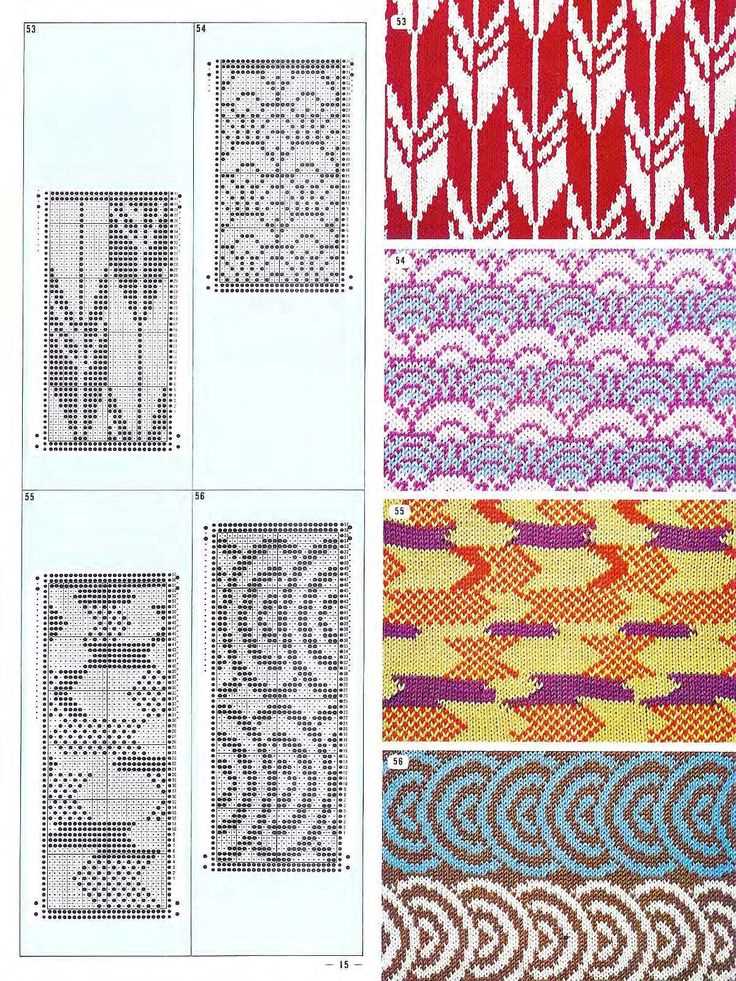
Fairisle knitting is a traditional knitting technique that originated in the Fair Isle, a small remote island in Scotland. The technique is characterized by its intricate patterns and the use of multiple colors in each row. Fairisle knitting has become synonymous with the distinct style and heritage of the Fair Isle region.
The origins of Fairisle knitting can be traced back to the 19th century when the technique was developed in response to the harsh weather conditions on the island. The locals needed a warm and durable material to protect themselves from the cold winds and rain. They started experimenting with different knitting techniques and patterns, eventually perfecting the Fairisle technique.
The patterns used in Fairisle knitting are often inspired by the natural beauty of the Fair Isle, such as the sea, the cliffs, and the heather-covered hills. The patterns are typically geometric and will include motifs like diamonds, stars, and waves. Each pattern is carefully crafted, with the knitter using multiple colors to create intricate designs.
The popularity of Fairisle knitting grew in the early 20th century when it caught the attention of fashion designers. They were drawn to the unique and beautiful patterns created by the technique and started incorporating them into their designs. Fairisle sweaters and accessories became fashionable, and the technique gained international recognition.
Today, Fairisle knitting continues to be cherished for its beauty and craftsmanship. Many people still enjoy creating their own Fairisle pieces or wearing garments made using this technique. The traditional patterns and techniques have been passed down through generations, ensuring that the art of Fairisle knitting will continue to thrive for years to come.
The Benefits of Fairisle Knitting Patterns
Fairisle knitting patterns have gained popularity among knitting enthusiasts for their unique and colorful designs. These patterns originate from the Fair Isle, a small island in Scotland known for its traditional knitting techniques. Knitting with Fairisle patterns offers several benefits, making it an excellent choice for both beginners and experienced knitters.
1. Beautiful and Eye-catching Designs: One of the main advantages of Fairisle knitting patterns is the stunning designs they produce. Fairisle patterns typically feature repetitive motifs and colors, resulting in intricate and visually appealing creations. These patterns often incorporate geometric shapes, floral elements, or traditional motifs, making them versatile and suitable for various knitting projects.
2. Skill Development: Knitting with Fairisle patterns can help improve your knitting skills. Fairisle techniques involve working with multiple colors in a single row, which requires concentration and precision. This practice can enhance your colorwork abilities and help you develop better tension control. Additionally, following complex Fairisle charts can improve your pattern-reading skills and expand your knitting repertoire.
3. Warm and Cozy Finished Products: Fairisle knitting patterns create thick and warm fabric due to the stranded colorwork technique. By working with two or more strands of yarn at a time, Fairisle knitting produces a double-layered fabric that traps heat and provides extra insulation. This makes Fairisle knitted items such as sweaters, hats, and scarves perfect for cold weather, ensuring both style and warmth.
4. Personalized Creations: Fairisle knitting patterns allow for creativity and personalization. With a wide range of colors and motifs to choose from, you can customize your project to reflect your own style and preferences. Whether you prefer vibrant and bold colors or a more subtle and muted palette, Fairisle knitting offers endless possibilities to create unique and personalized knitted items.
5. Engaging and Enjoyable Knitting Process: Knitting with Fairisle patterns can be an engaging and enjoyable process. The combination of different colors and pattern repeats can keep you motivated and excited about your project. Seeing the design come to life row by row adds an element of satisfaction to the knitting experience. Fairisle knitting can be a challenging yet rewarding technique that allows you to immerse yourself in the joy of creating something beautiful with your own hands.
To sum up, Fairisle knitting patterns bring a range of benefits to knitters, from beautiful designs and skill development to warm and personalized finished products. Exploring the world of Fairisle knitting opens up endless possibilities for creativity and enjoyment, making it a delightful endeavor for knitting enthusiasts of all levels.
Popular Fairisle Knitting Patterns
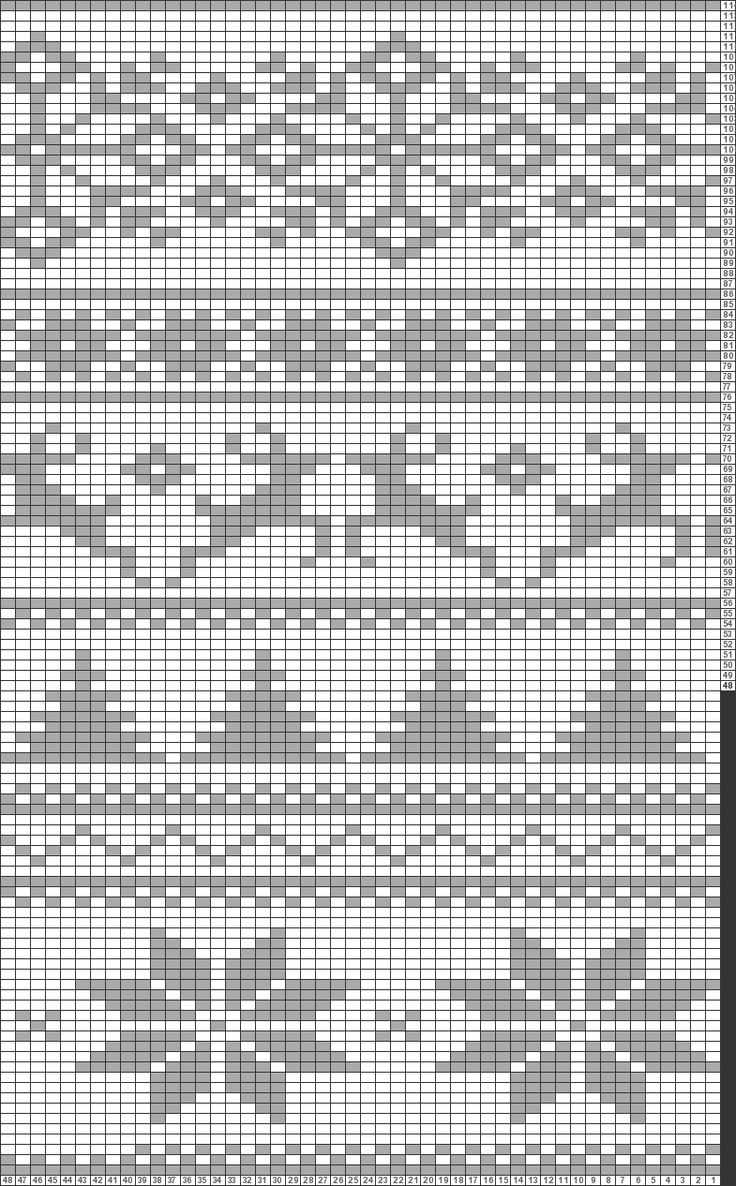
Fairisle knitting patterns are a popular choice among knitters, as they create beautiful and intricate designs. Fairisle, also known as stranded knitting, involves using multiple colors in a row to create a pattern. This technique originated in Fair Isle, a small island in Scotland, and has since become a beloved knitting tradition.
One of the most popular Fairisle knitting patterns is the classic Fairisle sweater. These sweaters typically feature a main color and several contrasting colors, creating a stunning geometric pattern. The traditional motifs often include stars, diamonds, and geometric shapes, but modern designs also incorporate floral and animal motifs. Fairisle sweaters are not only stylish, but also warm and cozy, making them a perfect choice for colder seasons.
Another popular Fairisle knitting pattern is the Fairisle hat. These hats are a great way to add a touch of color and pattern to your winter wardrobe. They can be knit in various styles, from slouchy beanies to snug-fitting caps. Fairisle hats are particularly popular among skiers and snowboarders, as they can add a pop of color to their outfits while keeping their heads warm on the slopes.
If you’re looking for a smaller Fairisle project, consider knitting a pair of fingerless gloves. These gloves are not only fashionable, but also practical, as they allow you to keep your hands warm while still being able to use your fingers. Fairisle fingerless gloves often feature symmetrical patterns and can be knit in various color combinations. They make a great accessory for chilly days, and also make for thoughtful gifts.
For those who enjoy a challenge, Fairisle socks are a popular project. Knitting Fairisle patterns on such a small scale requires precision and attention to detail, but the result is truly stunning. These socks often feature intricate motifs and can be knit in any color combination. Fairisle socks are not only a great way to keep your feet warm, but also a chance to showcase your knitting skills.
Choosing Yarn for Fairisle Knitting Projects

When it comes to Fairisle knitting, one of the most important aspects to consider is the choice of yarn. The right yarn can make all the difference in achieving the desired effect and creating a beautiful Fairisle pattern. There are a few key factors to keep in mind when choosing yarn for Fairisle projects.
Color Selection
The color palette is a crucial element in Fairisle knitting. Traditionally, Fairisle patterns feature intricate colorwork and multiple shades. When selecting yarn, it is important to choose colors that will complement each other well and enhance the overall pattern. Consider using a mix of contrasting and coordinating colors to create a visually appealing design.
Yarn Weight
The weight of the yarn will also play a role in the final outcome of your Fairisle project. Thicker yarns will create a bolder and more pronounced pattern, while finer yarns will result in a more delicate and intricate design. Consider the intended use of the finished piece and the level of detail you wish to achieve when selecting the yarn weight.
Fiber Content
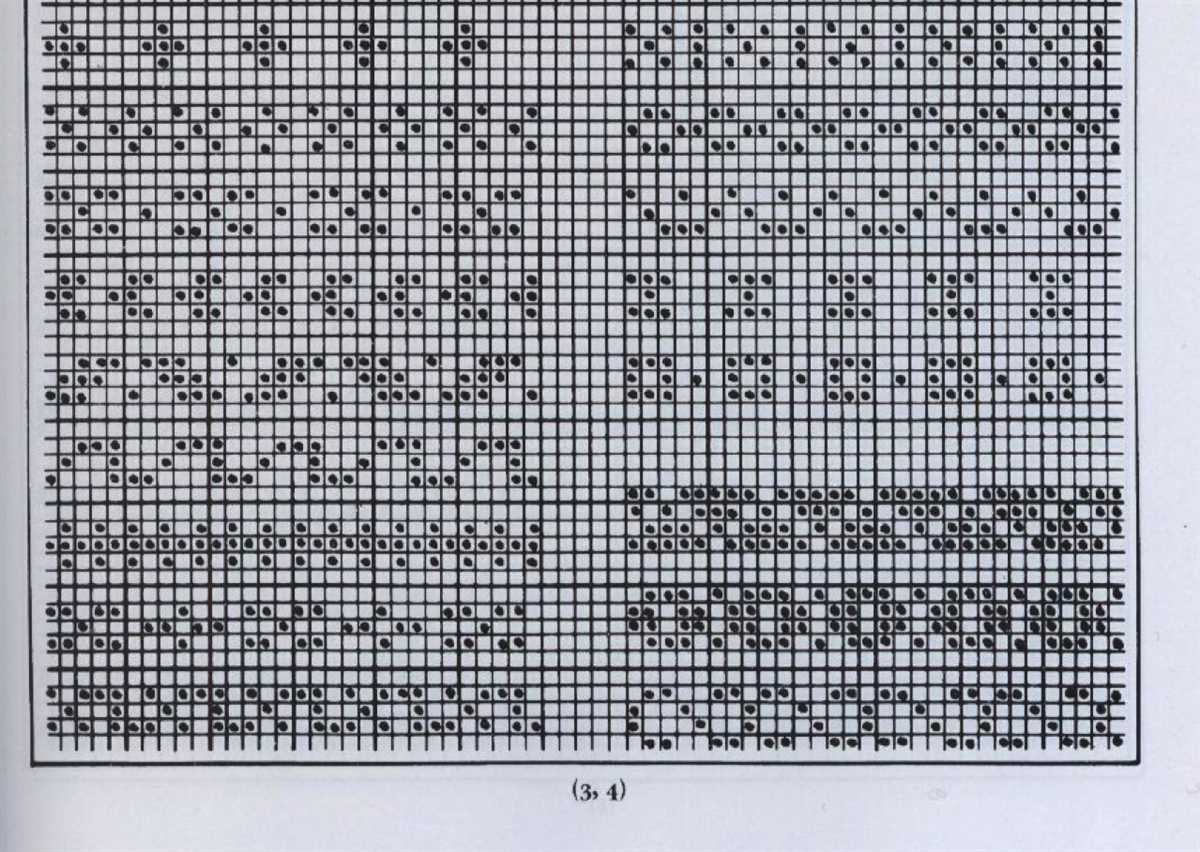
The fiber content of the yarn is another important factor to consider. Wool is the most commonly used fiber for Fairisle knitting due to its warmth, durability, and ability to hold the intricate colorwork. However, there are also other fiber options available, such as blends or acrylics, which can offer different qualities and characteristics. Consider the desired drape, softness, and care instructions for the project when choosing the fiber content.
Tension and Gauge

Lastly, it is crucial to consider the tension and gauge requirements of the Fairisle pattern when choosing the yarn. Fairisle knitting involves working with multiple strands of yarn at once, which can affect the tension and ultimately the size of the finished piece. It is important to select a yarn that will allow you to achieve the recommended tension and gauge in order to ensure the best fit and appearance of your Fairisle project.
Overall, choosing the right yarn for Fairisle knitting projects requires careful consideration of color, weight, fiber content, and tension. By selecting the appropriate yarn, you can enhance the beauty of the Fairisle pattern and create a stunning finished piece.
Tips for Getting Started with Fairisle Knitting
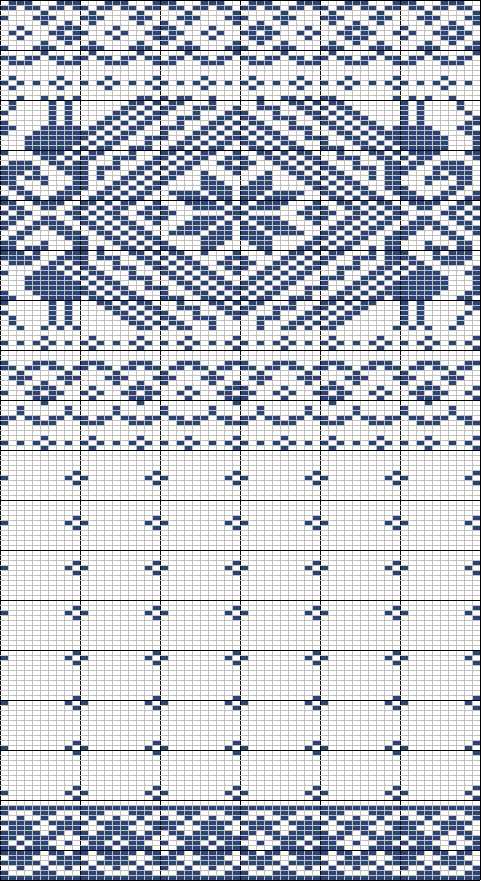
Fairisle knitting, also known as stranded knitting, is a technique that involves working with multiple colors in a single row or round. It is characterized by its intricate colorwork patterns, often featuring geometric designs or motifs inspired by traditional Scottish knitting. If you’re interested in trying out fairisle knitting, here are a few tips to help you get started:
1. Choose the Right Yarn and Needles
When selecting yarn for fairisle knitting, it’s important to choose colors that have good contrast. This will help your colorwork pattern stand out. Look for yarns that are the same weight and fiber content, as this will ensure an even tension. As for needles, consider using circular needles for larger projects, as they can hold a larger number of stitches.
2. Practice Tension and Floats
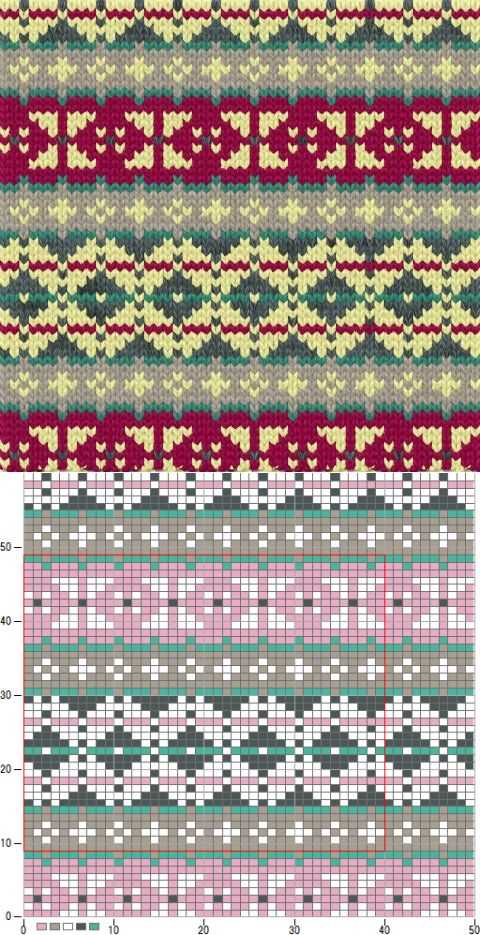
Tension is crucial in fairisle knitting. Keep your tension relaxed and consistent throughout your work to avoid puckering or pulling. Additionally, be mindful of floats – the strands of yarn that are carried along the back of your work when you’re not using them. Make sure your floats are not too tight, as this can distort the fabric, but also not too loose, as it can catch on fingers or snag on clothing.
3. Start with Simple Patterns

If you’re new to fairisle knitting, it’s best to start with simple patterns before tackling more complex designs. Begin with patterns that only use two colors and gradually work your way up to more intricate motifs. This will allow you to become familiar with the technique and build your confidence.
Once you’re comfortable with fairisle knitting, you can experiment with different color combinations and create your own unique designs. Remember to practice patience and have fun with the process – fairisle knitting can be a rewarding and enjoyable craft!
Common Mistakes to Avoid in Fairisle Knitting
Fairisle knitting is a popular technique that involves creating intricate patterns by alternating between two colors of yarn. While it can be a fun and rewarding project, there are some common mistakes that beginners often make. By being aware of these mistakes and how to avoid them, you can improve your fairisle knitting skills and create beautiful, seamless patterns.
1. Tension Issues: One of the most common mistakes in fairisle knitting is having uneven tension between the two colors of yarn. This can result in one color appearing tighter or looser than the other, which can affect the overall look of the pattern. To avoid this, make sure to consistently tension both yarns as you work, and consider using a larger needle size to create more even stitches.
2. Carrying Yarns: Another mistake to avoid is carrying your yarns too loosely or tightly across the back of your work. When you switch colors, it’s important to carry the inactive color loosely behind your work so that it doesn’t pull or distort the fabric. However, if the yarn is carried too loosely, it can create long floats on the back of the work that can easily catch on things. On the other hand, if the yarn is carried too tightly, it can cause puckering and distortion in the fabric. Practice finding the right tension for carrying your yarns to achieve a smooth and even result.
3. Incorrect Color Dominance: Fairisle knitting often involves working with two colors in a pattern, with one color dominant over the other. The dominant color creates more prominent stitches, while the background color recedes into the pattern. It’s important to correctly identify which color should be dominant for each stitch in the pattern. Typically, the darker color is dominant, but this can vary depending on the specific pattern. Be sure to follow the instructions or chart provided with your pattern to determine the correct color dominance.
4. Not Following a Chart or Pattern: Fairisle knitting patterns are often presented in the form of a chart or written pattern. It’s important to carefully read and follow the instructions provided, as fairisle patterns can be complex and require attention to detail. Skipping or misinterpreting a step can result in a pattern that doesn’t look as intended. Take the time to understand the pattern and reference it regularly as you work.
5. Lack of Practice: Fairisle knitting can be challenging, especially for beginners. Like any skill, it requires practice and patience to improve. Don’t be discouraged if your first attempt doesn’t turn out perfectly. Keep practicing and experimenting with different techniques and patterns to develop your fairisle knitting skills.
By being aware of these common mistakes and taking steps to avoid them, you can enhance your fairisle knitting and create stunning patterns. Remember to focus on maintaining even tension, correctly carrying your yarns, understanding color dominance, following patterns accurately, and practicing regularly. With time and practice, you’ll become more confident in your fairisle knitting abilities and be able to create beautiful, intricate designs.
How to Read Fairisle Knitting Charts
Fairisle knitting patterns are known for their intricate designs and use of multiple colors. Understanding how to read Fairisle knitting charts is essential for successfully completing a Fairisle project. These charts, which depict the pattern row by row, allow knitters to easily keep track of the colors and stitches required for each row.
1. Start from the bottom right: Fairisle charts are typically read from the bottom right corner, with the first row being the one closest to you. As you work your way up the chart, each row corresponds to the corresponding row in your knitting.
2. Different symbols for each color: In Fairisle charts, each color is represented by a specific symbol or letter. These symbols are typically listed in the chart’s key, indicating which color to use for each stitch. Make sure to familiarize yourself with the symbols before starting your project.
3. Follow the chart row by row: To read the Fairisle chart, start at the first row (closest to you) and work your way up. Each square on the chart represents a stitch, and the symbol inside the square denotes the color of yarn to use. For example, if the symbol in a square is “A,” you would use the yarn color associated with “A” for that stitch.
4. Use stitch markers for complex patterns: If the Fairisle pattern you’re working on has a complex design with multiple colors and stitches, it can be helpful to use stitch markers to keep track of where you are in the chart. Place a stitch marker at the beginning and end of a pattern repeat or at key points in the chart to prevent mistakes.
5. Pay attention to shaping and repeats: Fairisle charts often include shaping instructions, such as decreases or increases, to create the desired fit. Make sure to carefully follow these shaping instructions and pay attention to any pattern repeats indicated in the chart. This will ensure that your finished project looks just as beautiful as the design on the chart.
By understanding how to read Fairisle knitting charts, you can confidently tackle any Fairisle project and create stunning garments and accessories with intricate colorwork patterns.
Adding Fairisle Knitting to Your Wardrobe
Fairisle knitting is a traditional technique that originated in the Scottish Shetland Islands. It is characterized by the use of multiple colors and intricate patterns, creating a beautiful and unique design. If you’re looking to add some charm and warmth to your wardrobe, incorporating Fairisle knitting is the perfect way to do so.
1. Accessories: One of the easiest ways to incorporate Fairisle knitting into your wardrobe is through accessories. Hats, scarves, gloves, and socks with Fairisle patterns can instantly add a pop of color and texture to any outfit. Opt for neutral base colors with bold Fairisle patterns for a classic and versatile look.
2. Sweaters and Cardigans: Fairisle knitting is most commonly seen on sweaters and cardigans. These pieces can be the statement-making item in your outfit, or they can be layered with other garments for added warmth and style. Choose a Fairisle sweater in a neutral color palette to easily match with your existing wardrobe.
3. Layering: Fairisle knitting can also be incorporated into your wardrobe through layering. Choose a Fairisle knit vest or a button-down cardigan, and wear it over a plain shirt or blouse. This adds dimension and visual interest to your outfit, while also keeping you cozy during colder months.
4. Mixing and Matching: Don’t be afraid to mix and match different Fairisle patterns together. The key is to choose patterns that have at least one common color to tie them together. For example, pair a Fairisle sweater with a scarf that has a similar color in its pattern. This creates a cohesive and stylish look.
5. Occasional Wear: Fairisle knitting is not only suitable for casual wear but can also be incorporated into more formal occasions. Look for Fairisle patterns on dressier pieces, such as skirts or dresses, and pair them with elegant accessories for a sophisticated and unique look.
Incorporating Fairisle knitting into your wardrobe allows you to embrace the rich heritage of this traditional knitting technique while adding a touch of warmth and style to your outfits. Whether through accessories, sweaters, layering, or mixing and matching, Fairisle knitting offers endless possibilities for creating unique and eye-catching looks.
Exploring Advanced Fairisle Knitting Techniques
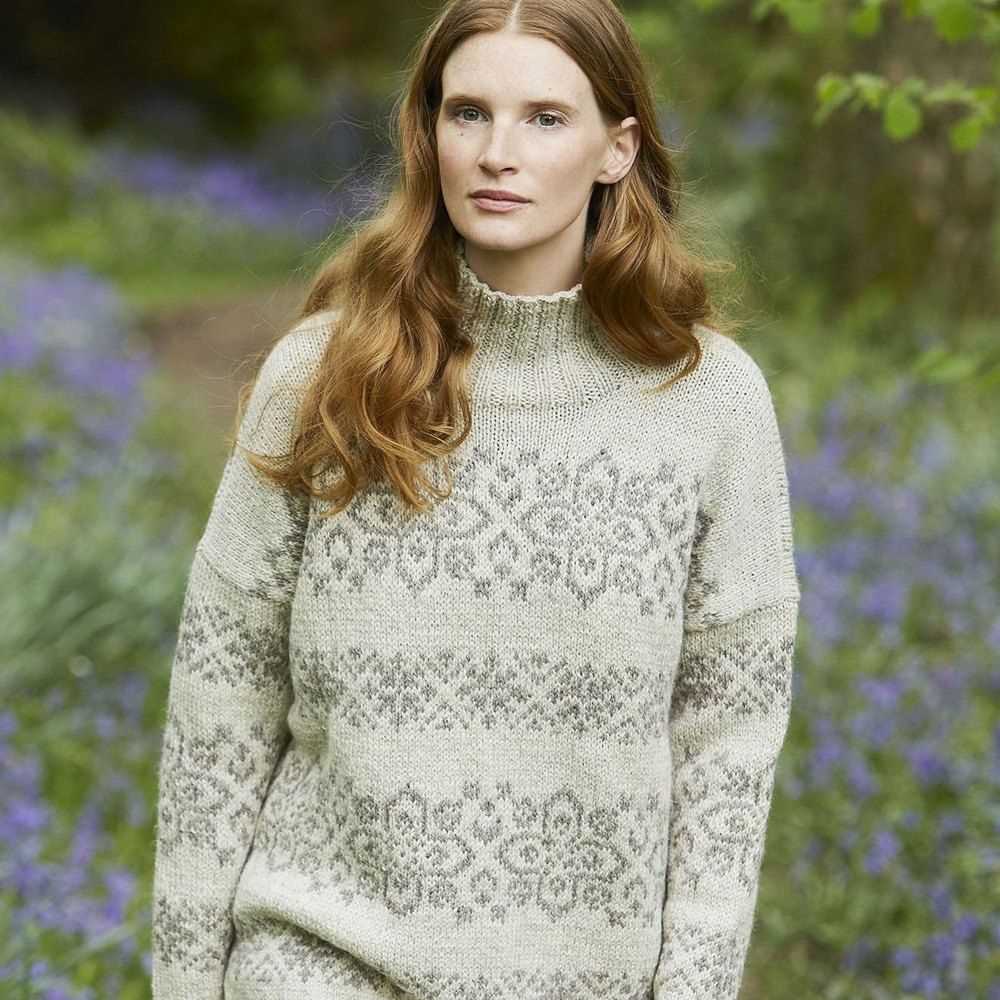
Fairisle knitting is a traditional technique that involves using multiple colors in a single row to create intricate, geometric patterns. While Fairisle knitting can be a challenging technique to master, there are advanced techniques that can take your Fairisle knitting to the next level.
Stranding: One advanced technique in Fairisle knitting is stranding. Stranding involves carrying the unused colors along the back of the work while knitting with the main color. This technique allows for faster color changes and creates a smooth fabric with fewer loose threads.
Steeking: Steeking is another advanced technique used in Fairisle knitting. It involves knitting a garment in the round and then cutting open the front to create a cardigan or opening. Steeking can be intimidating, but it allows for more freedom in design and can make colorwork patterns easier to manage.
Intarsia: Intarsia is a technique that involves using separate lengths of yarn for each color section, rather than carrying the yarn across the back of the work. This technique is often used for larger blocks of color in Fairisle knitting, as it allows for cleaner color changes and prevents the fabric from becoming too bulky.
Duplicate Stitch: Duplicate stitch is a technique that can be used to add additional color or detail to Fairisle knitting after the project is complete. It involves using a tapestry needle and a separate length of yarn to embroider over the stitches, creating the illusion of a new color or pattern.
By exploring advanced Fairisle knitting techniques such as stranding, steeking, intarsia, and duplicate stitch, you can take your knitting to new heights. These techniques offer more flexibility in design and allow for the creation of intricate, detailed patterns. So grab your needles, pick out some beautiful yarn, and get ready to dive into the world of advanced Fairisle knitting!
Fairisle Knitting Patterns for Different Garments
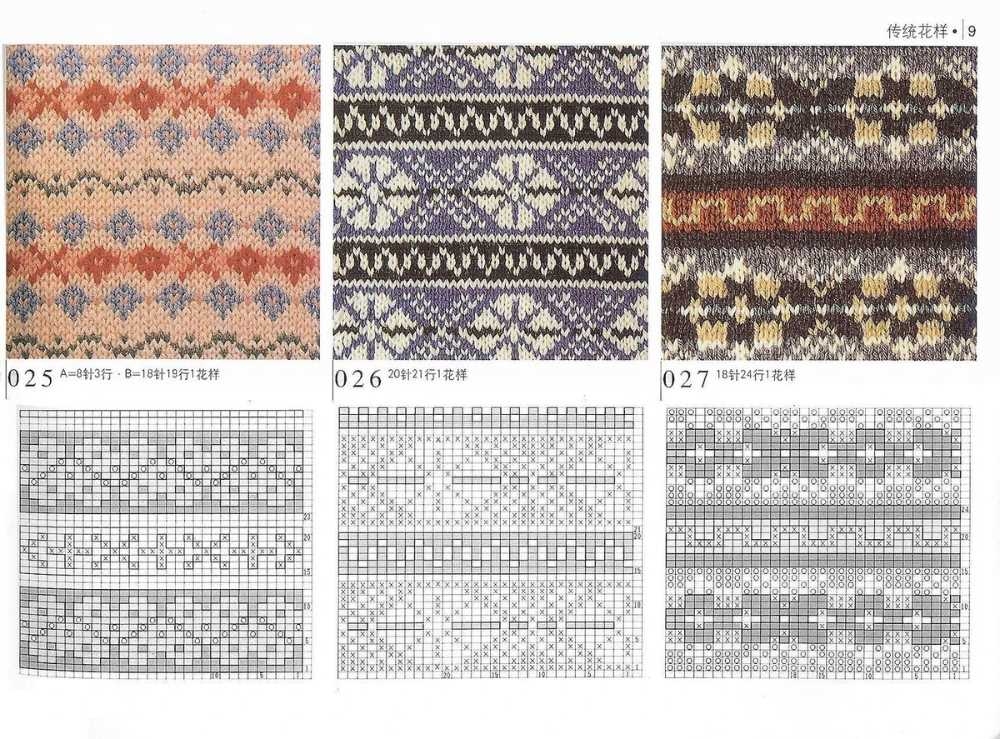
When it comes to fairisle knitting patterns, the design possibilities are endless. Fairisle knitting, also known as stranded knitting, is a technique that involves using multiple colored yarns in a single row to create intricate patterns. This technique originated in Fair Isle, a small island in Scotland, and has since become popular all around the world.
One of the most common garments made using fairisle knitting is the sweater. Fairisle sweaters are typically knitted in a round yoke style, with a colorful pattern around the neckline. The patterns often feature traditional motifs such as snowflakes, stars, or geometric shapes. These sweaters are cozy, warm, and perfect for cold winter days.
Fairisle Hat Patterns
If you’re looking to add a touch of fairisle to your accessories, a fairisle hat is a great choice. These hats can be knitted in various styles, such as beanies or slouchy hats, and the fairisle pattern can be placed at the brim or worked throughout the entire hat. With their colorful designs, fairisle hats are not only functional but also stylish.
Fairisle Scarf Patterns
Another popular garment for fairisle knitting is the scarf. Fairisle scarf patterns often feature intricate geometric patterns or repeating motifs. The combination of different colors creates a visually stunning effect that is sure to make a statement. Whether you choose to knit a long scarf or a cowl, a fairisle pattern will add a touch of elegance to your winter wardrobe.
Fairisle Sock Patterns
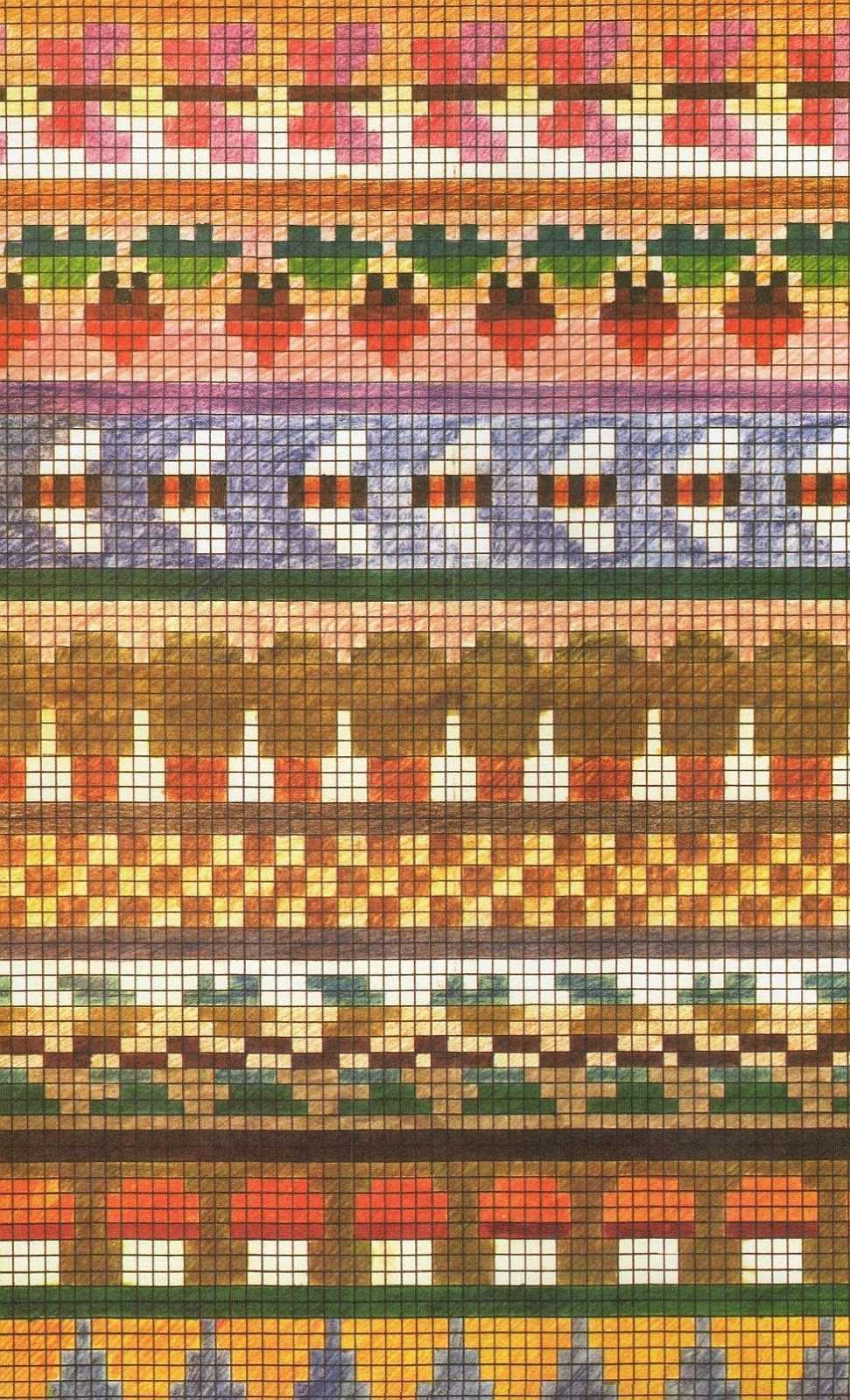
If you’re looking to try fairisle knitting on a smaller scale, fairisle sock patterns are a great option. These patterns often feature a band of fairisle motifs around the cuff, giving the socks a unique and eye-catching look. Fairisle socks are not only a fun knitting project but also a cozy and comfortable addition to your sock drawer.
Overall, fairisle knitting patterns offer a wide range of options for different garments. Whether you choose to knit a sweater, hat, scarf, or socks, the intricate fairisle patterns are sure to impress. With their colorful designs and cozy feel, fairisle garments are perfect for adding a touch of style to your winter wardrobe.
Where to Find Fairisle Knitting Patterns and Inspiration
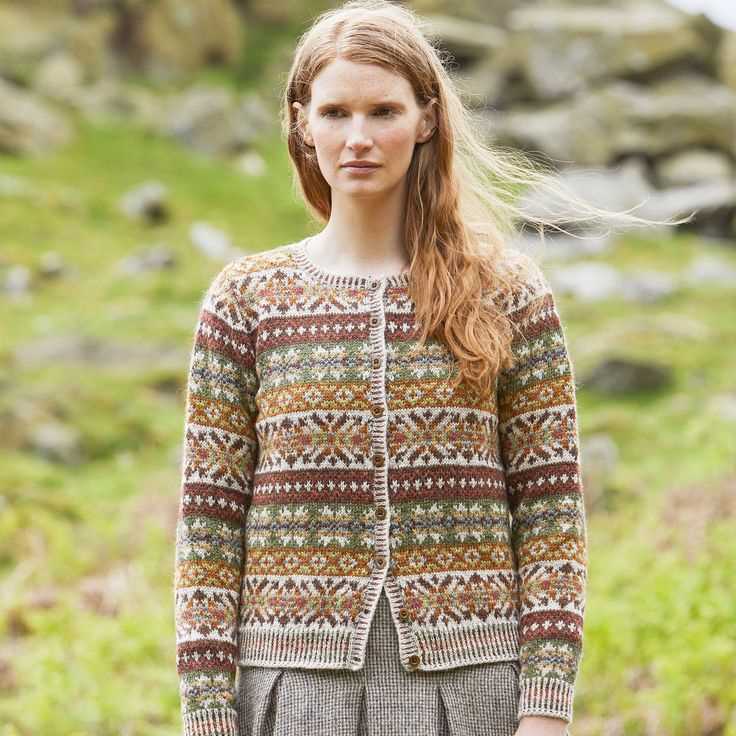
If you are interested in trying out Fairisle knitting and are looking for patterns and inspiration, there are several resources you can explore. From books and magazines to online platforms and communities, you can find a wealth of designs and ideas to incorporate into your knitting projects.
1. Books and Magazines: Many knitting books and magazines feature Fairisle patterns and designs. Look for publications that specialize in colorwork or traditional knitting techniques for the best selection.
2. Online Platforms: There are many websites and online platforms dedicated to knitting and crafting that offer a wide range of Fairisle knitting patterns. Ravelry, LoveKnitting, and KnittingPatternCentral are popular platforms where you can find both free and paid patterns.
3. Blogs and Social Media: Many knitting enthusiasts and designers share their Fairisle knitting patterns and inspiration on their personal blogs or social media accounts. Following these individuals can give you access to unique and creative designs.
4. Knitting Communities: Joining knitting communities, whether online or in-person, can provide you with a supportive network and a wealth of resources. These communities often share patterns and tips, and you can even participate in knit-alongs or exchanges to further your Fairisle knitting skills.
In conclusion, there are numerous avenues you can explore to find Fairisle knitting patterns and inspiration. From books and magazines to online platforms and knitting communities, the resources available are vast and varied. So, go ahead and dive into the world of Fairisle knitting to create beautiful colorwork pieces that showcase your creativity and skill.
Q&A:
What is Fairisle knitting?
Fairisle knitting is a technique that creates a colorful pattern by using two or more colors in each row of stitches. The pattern is created by carrying the unused colors behind the work, while knitting with the main color.
Where did Fairisle knitting originate?
Fairisle knitting originated in the Fair Isle, a small island in Scotland. The technique was traditionally used to create warm and durable garments, such as sweaters and hats, that featured intricate color patterns.
What are some common Fairisle knitting patterns?
Some common Fairisle knitting patterns include geometric designs, motifs inspired by nature such as flowers and animals, and traditional Scottish motifs like thistles or tartan patterns. These patterns are often repeated in a symmetrical or alternating way.
What materials do I need for Fairisle knitting?
To knit Fairisle patterns, you will need a set of knitting needles, yarn in various colors, and a pattern to follow. Generally, a smooth and durable yarn, such as wool, is recommended for Fairisle knitting.